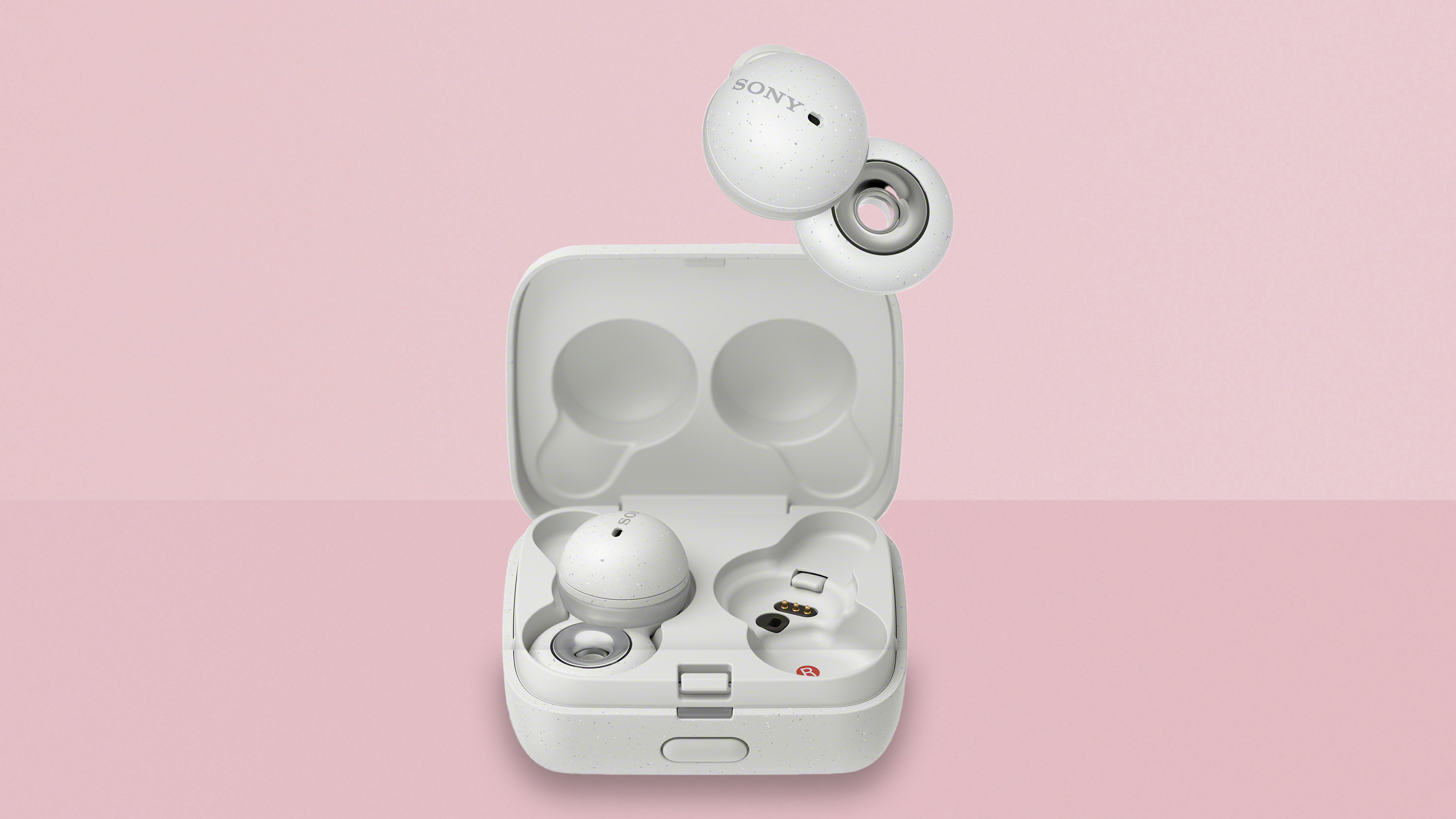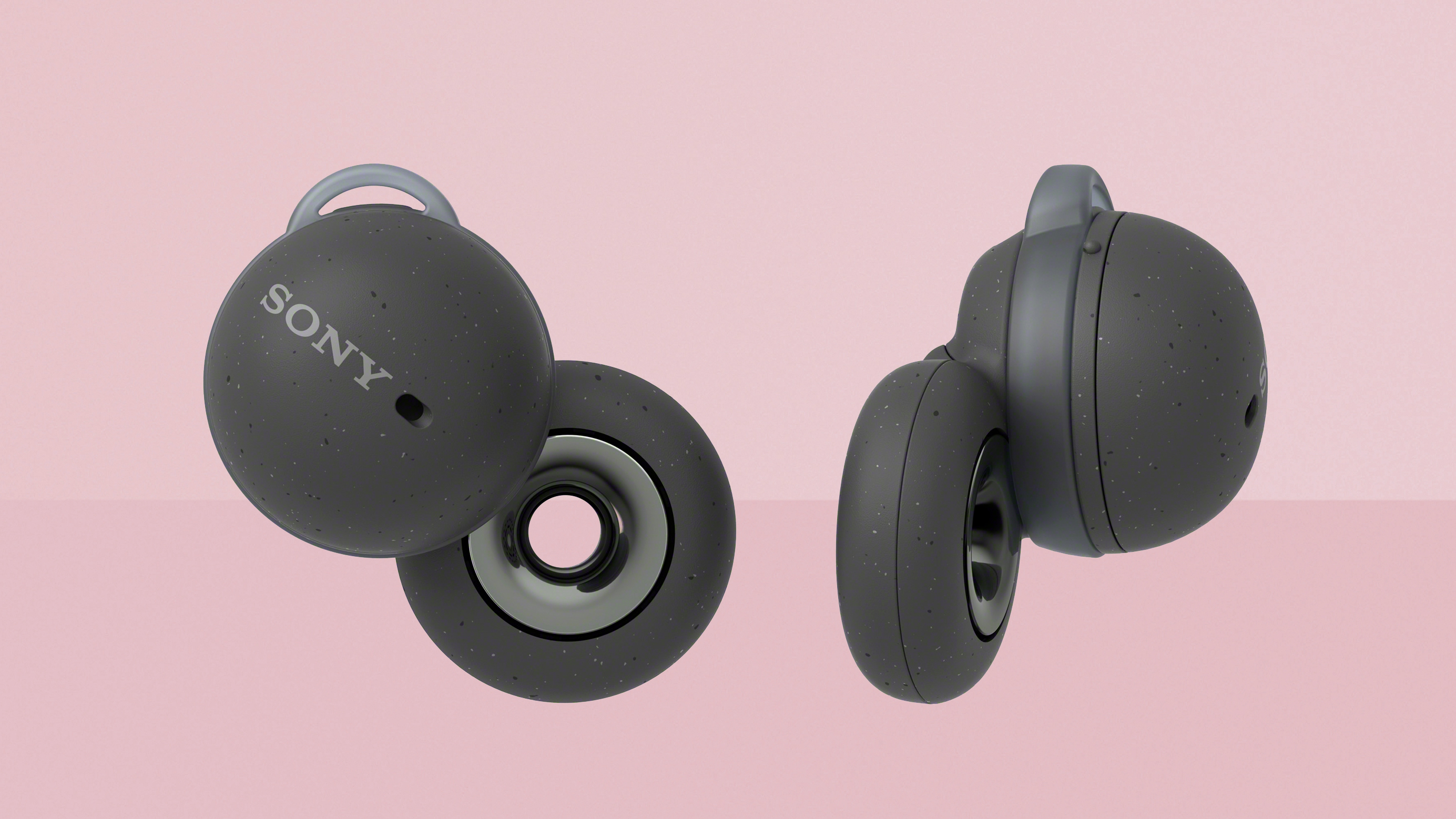Sony LinkBuds WF-L900 review: weird wireless earbuds ideal for office or home working
The Sony LinkBuds have a hole in the middle, and it turns out that can be a good thing

If you like small, light, comfortable and fine-sounding in-ear headphones, but you also like to know what’s going on in the outside world, Sony has answered your prayers
-
+
Light and comfortable
-
+
Excellent control options
-
+
Open, well-organised and energetic sound
-
-
Never quite achieve convincing bass reproduction
-
-
Unremarkable battery life
-
-
Call quality is hit-and-miss
Why you can trust T3

In this Sony LinkBuds WF-L900 review, we’re testing some unique true wireless earbuds. The world is far from short of wireless in-ears, of course, and there are quite a few pairs around bearing the ‘Sony’ logo already, but these… are different. These have a hole over your ear canal. On purpose!
Like other Sony headphones, the LinkBuds are compatible with the company’s excellent ‘Headphones Connect’ app, which is a hotbed of features and functionality.
Also like those other Sony models, the LinkBuds can be controlled using voice or touch too, and are a model of comfort and ergonomic good sense. And, yes, like other Sony headphones, they sound great.
There’s no noise-cancellation here, though, whether passive or active. Because… what’s the opposite of noise-cancellation? Noise-encouragement? Whatever you call it, it’s what sets the LinkBuds apart: the hole is designed to let in audio around you, so that you're less disconnected from the world.
It makes the Sony LinkBuds a great choice for the office or other situations where people might need your attention, but you still want some tunes to keep you going. If that's a priority when shopping for the best wireless earbuds, they may be an ideal choice for you – but on the flip side, it means they definitely won't make the list of the best travel headphones, since they'll let in all the engine noise.
Sony LinkBuds review: Price & release date
The Sony WF-L900 (or LinkBuds to their friends) were released in February 2022, and in the United Kingdom they’ll set you back £149. In the United States they sell for $179 or thereabouts, while customers in Australia are looking at AU$299 or so.
Ordinarily we’d use this bit of space to reel off all the many different pairs of competing true wireless in-ears that sell for this sort of money, but that's a bit harder than usual. Because the LinkBuds are a product we never expected to see: true wireless in-ear headphones that are obviously and demonstrably different to all the others.
The closest equivalent is Apple's AirPods (3rd Gen), which are a little more expensive, and don't feature an in-ear fit, so let in more outside noise than those with proper noise isolation. Lots of people like the AirPods range for that very reason, so they're probably the major competition to the LinkBuds with that in mind.
They're not the only other earbuds with that kind of fit though: the Huawei Freebuds 4 are the more affordable option, though aren't as well-specced as either the Sony or Apple option.

Sony LinkBuds review: Features & what's new
Given that most true wireless in-ear buds aren’t even a variation on a theme, it’s gratifying to find Sony bringing a genuine point of difference to a product category that has seemed standardised for quite some time now.
The idea of ‘open’ in-ear headphones may seem counterintuitive, but by deploying a 12mm ‘ring’ driver in each earbud, Sony has created an in-ear headphone that doesn’t block the wearer’s ear. Which means greater awareness of surroundings for the user and reduced inclination to shout at the user for the rest of us.
Backing up the ring driver is new digital-to-analogue conversion circuitry and headphone amplification in the V1 integrated processor. Sony’s also included its Digital Sound Enhancement Engine, which rather ambitiously claims to return lossy and compressed audio files to something approaching their original, uncompressed state. Certainly we've been impressed with the sound quality of the likes of the Sony WF-1000XM4 and Sony WH-1000XM4 that use this tech, but it's hard to say that it's because of this tech. Sony makes good headphones, in any case.
Along with plastic-free, 100% recycled paper packaging, the LinkBuds use recycled ABS polymer mixed with stone in their construction, as does the charging case. Grey or white finishes are available, but they’re both pretty green.

Sony LinkBuds review: Performance
It’s fair to say it takes a few minutes to get used to the sensation of wearing true wireless in-ear headphones and yet not being utterly unaware of sounds that might be happening all around. People who want to be isolated from external influences are absolutely spoiled for choice among the best noise-cancelling earbuds, though – the LinkBuds are for the rest of us.
Once you get accustomed to the amount of ambient sound you receive along with your music, the benefits of the LinkBuds – for cyclists, for pedestrians, for people who don’t want other people to think they’re being ignored – are obvious. And once you’re over that initial weirdness, there’s lots to enjoy about the way the LinkBuds make music.
Theirs is – and there’s no pun intended here – an open sound. They create a generous soundstage, give competing elements on it plenty of elbow-room in which to do their individual thing. And they organise it well, too – it’s not at all difficult to understand an individual musician’s position relative to the others, even if you’re talking about a full-on symphony orchestra.
With EQ levels left flat, the top of the frequency range has just about enough bite and shine to avoid being described as ‘dull’. There’s a sensation of roll-off, certainly, but it’s acceptably mild – and almost certainly preferable to the more feral alternative less well-behaved earbuds can produce. The transition into the midrange is seamless, and once down there the LinkBuds are brimming with detail both broad and fine. Singers get to emote, instruments get to communicate abundantly.
Problems, such as they are, concern the way the Sony reproduce lower frequencies. At the otherwise-ideal flat EQ setting, bass is rather flimsy and insubstantial – there’s a decent level of detail revealed and proper shape to bass sounds, but as far as substance and punch go, well… there’s just not all that much of it. This, one might reasonably think, is a job for the EQ adjustment that’s available in the app – but upping the bass simultaneously reduces the amount of fine detail therein and also bogs down what has, up until now, been a very sprightly presentation.
They’re a decently dynamic listen too, with the sort of attentiveness to harmonic variations that breathe proper life into a recording. Big volumes hold no challenges for the LinkBuds, but neither do they let the little, barely there, elements of recording escape their notice even if the going gets raucous. Quite often the sort of energy the Sony can muster goes hand-in-hand with robust low-frequency reproduction – but not in this instance.

Sony LinkBuds review: Design & usability
The LinkBuds are small and very light (just 4.1g each), and are therefore able to fit into a small, light (34g) charging case. Despite the dimensions, though, the LinkBuds have a respectable enough battery life of between five and six hours (for the buds themselves) and another couple of full charges in the case – and a 10-minute charge will give you an hour’s playback.
None of this is especially impressive; the Cambridge Audio Melomania 1+ are also light, and offer 9 hours of battery life. But they don't have to contend with having a hole in them, so we'll let the Sony buds off.
Light weight and tidy dimensions go a long way to making the LinkBuds comfortable – and to make absolutely certain Sony provides five different sizes of soft ‘fitting supporter’ (which is a sort of fin or wing that helps keep the earbud stable when in position). And thanks to an IPX4 rating, they’re resilient as well as secure.
As far as usability goes, Sony’s Headphones Connect app has been leading the field for quite a while now, and here it’s just as useful, as usable and as thorough as it is in its other implementations. Here’s where you can fiddle with EQ settings, implement Sony’s 360 Reality Audio spatial algorithm, switch DSEE on or off, prioritise wireless stability or wireless sound quality, decide whether you want the music to pause when you take out the earbuds or not…
It’s here you can decide on the touch-control functionality you’d like. Each earbud will respond to a double- or triple-tap, and the user can choose from ‘play/pause and next track’, ‘volume up/down’, ‘next/previous track’, ‘launch/cancel voice assistant’ (Google Assistant and Amazon Alexa are both available) or ‘none assigned’ for each ear. And the LinkBuds don’t even need you to touch their capacitive surface: just double-tap (or triple-tap) the side of your head just in front of your ear and your commands will be acted upon.
In addition, adaptive voice control, speak-to-chat (which automatically pauses playback when your voice is detected), Android Fast Pair and AI-based voice-pick-up tech for optimum call quality are all designed to make your life easier.
Sony LinkBuds review: Verdict
Almost all the news here is positive. The Sony LinkBuds are innovative, comfortable, sound great (with just one significant caveat), are adaptable and easy to control. For now, they’re number one in a field of one.
But let's be clear, they're not for everyone. In some ways, a pair of noise-cancelling headphones is more flexible, since you could turn on the ambient/transparency mode if you want to let sound through.
But it's not quite the same thing, and they're all bigger and heavier than the Sony. When it comes to the mix of features and that barely-notice-they're-in-your-ears design, the LinkBuds are a really good buy, if that's what you want.
Sony LinkBuds review: Also consider
No alternative true wireless in-ear is going to do exactly what the Sony LinkBuds can, so the suitability of alternatives is debatable.
We already mentioned that Apple's AirPods are popular with some people for similar reasons the LinkBuds have been invented, so iPhone users should consider those in particular (though they work with Android too, just without some of the smarter features). Here's our full Apple AirPods (3rd Gen) review – the Apple AirPods (2nd Gen) have a similar kind of fit, but don't sound anywhere near as good as the Sonys.
Sign up to the T3 newsletter for smarter living straight to your inbox
Get all the latest news, reviews, deals and buying guides on gorgeous tech, home and active products from the T3 experts
Simon Lucas is a freelance technology journalist and consultant, with particular emphasis on the audio/video aspects of home entertainment. Before embracing the carefree life of the freelancer, he was editor of What Hi-Fi? magazine and website – since then, he's written for titles such as Wired, Metro, the Guardian and Stuff, among many others. Should he find himself with a spare moment, Simon likes nothing more than publishing and then quickly deleting tweets about the state of the nation (in general), the state of Aston Villa (in particular) and the state of his partner's cat.
-
 Is Apple TV+ quietly 'doing a Netflix'? Cancellations have fans fearful
Is Apple TV+ quietly 'doing a Netflix'? Cancellations have fans fearfulAcapulco is over after forthcoming season, but Apple's commitment to headline shows is something other streamers could learn from
By Mike Lowe Published
-
 Netflix's fantasy action blockbuster returns in July, five years after huge original
Netflix's fantasy action blockbuster returns in July, five years after huge originalThe Old Guard 2 is on the way
By Max Freeman-Mills Published
-
 Your smart home just got easier to manage – thanks to Matter’s new update
Your smart home just got easier to manage – thanks to Matter’s new updateIt brings three exciting features with it
By Lizzie Wilmot Published